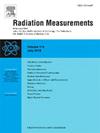基于CFD模拟的氡评价模型
IF 2.2
3区 物理与天体物理
Q2 NUCLEAR SCIENCE & TECHNOLOGY
引用次数: 0
摘要
氡及其子代影响的放射学研究已在世界范围内得到加强。氡来自土壤、岩石和建筑材料,在封闭或通风不良的区域集中。吸入这种气体会危害人体健康,因为它的α排放和短暂的衰变产物可以沉积在肺组织中。与传统实验相比,利用计算流体动力学(CFD)模拟研究室内环境中的氡分布在成本和响应时间方面具有相当优势,可以更好地了解空气中分散的氡水平,并能够估计个人的短期和长期暴露。该研究旨在通过Ansys CFX软件进行CFD建模,确定氡在高放射性背景受控环境中的行为。这次调查是在伯南布哥联邦大学核能系所属的放射生态学小组的样品储藏室进行的。选择这个房间是因为它的高放射性背景,这是由环境放射性样品的存在造成的。在研究中,建立了物理数学模型,并生成了三维图形平台,证实了该放射性核素在采样环境中的弥散性。仿真结果与AlphaGUARD探测器的实验结果进行了比较。与理论预测一致,ANSYS CFX的CFD模拟表明,氡浓度最高的区域靠近放射源。值得注意的是,所开发的模型具有定性特征,允许分析环境中的氡扩散趋势并确定气体积聚的区域。虽然它不能准确地再现实验测量的绝对浓度值,但该模型证明足以表示受控条件下氡的空间分布,并且可以用于验证行为。本文章由计算机程序翻译,如有差异,请以英文原文为准。
Radon assessment model using CFD simulation
Radiometric studies on the influence of radon and its progeny have been intensified worldwide. Radon emanates from soil, rocks, and building materials, concentrating in enclosed or poorly ventilated areas. Inhaling this gas can harm human health due to its alpha emission and short-lived decay products, which can be deposited in lung tissues. Simulations with Computational Fluid Dynamics (CFD) to study radon distribution in indoor environments is quite advantageous in terms of cost and response time compared to conventional experiments, allowing a better understanding of radon levels dispersed in the air and enabling the estimation of short and long-term individual exposure. The study aimed to determine the behavior of radon in a controlled environment with a high radioactive background, using CFD modeling through Ansys CFX software. The investigation was conducted in the sample storage room of the Radioecology Group, belonging to the Department of Nuclear Energy of the Federal University of Pernambuco. This room was selected due to its high radioactive background, which was caused by the presence of environmental radioactive samples. In the study, a physical-mathematical model was constructed, and a 3D graphic platform was generated, confirming the dispersion of this radionuclide in the sampling environment. The simulation results were compared with those obtained experimentally using the AlphaGUARD detector. As theoretically predicted, the CFD simulation with ANSYS CFX indicated that the areas with the highest radon concentration are close to radioactive sources. It is worth noting that the developed model has a qualitative character, allowing the analysis of the radon dispersion tendency in the environment and identifying regions where the gas accumulates. Although it did not accurately reproduce the absolute concentration values measured experimentally, the model proved adequate to represent the spatial distribution of radon under controlled conditions and is viable for validating behavior.
求助全文
通过发布文献求助,成功后即可免费获取论文全文。
去求助
来源期刊

Radiation Measurements
工程技术-核科学技术
CiteScore
4.10
自引率
20.00%
发文量
116
审稿时长
48 days
期刊介绍:
The journal seeks to publish papers that present advances in the following areas: spontaneous and stimulated luminescence (including scintillating materials, thermoluminescence, and optically stimulated luminescence); electron spin resonance of natural and synthetic materials; the physics, design and performance of radiation measurements (including computational modelling such as electronic transport simulations); the novel basic aspects of radiation measurement in medical physics. Studies of energy-transfer phenomena, track physics and microdosimetry are also of interest to the journal.
Applications relevant to the journal, particularly where they present novel detection techniques, novel analytical approaches or novel materials, include: personal dosimetry (including dosimetric quantities, active/electronic and passive monitoring techniques for photon, neutron and charged-particle exposures); environmental dosimetry (including methodological advances and predictive models related to radon, but generally excluding local survey results of radon where the main aim is to establish the radiation risk to populations); cosmic and high-energy radiation measurements (including dosimetry, space radiation effects, and single event upsets); dosimetry-based archaeological and Quaternary dating; dosimetry-based approaches to thermochronometry; accident and retrospective dosimetry (including activation detectors), and dosimetry and measurements related to medical applications.
 求助内容:
求助内容: 应助结果提醒方式:
应助结果提醒方式:


